Development and Validation of Autophagy-Related Gene Signature and Nomogram for Predicting Survival in Oral Squamous Cell Carcinoma
- PMID: 33178587
- PMCID: PMC7596585
- DOI: 10.3389/fonc.2020.558596
Development and Validation of Autophagy-Related Gene Signature and Nomogram for Predicting Survival in Oral Squamous Cell Carcinoma
Abstract
Background: Autophagy, a highly conserved self-digesting process, has been deeply involved in the development and progression of oral squamous cell carcinoma (OSCC). However, the prognostic value of autophagy-related genes (ARGs) for OSCC still remains unclear. Our study set out to develop a multigene expression signature based on ARGs for individualized prognosis assessment in OSCC patients.
Methods: Based on The Cancer Genome Atlas (TCGA) database, we identified prognosis-related ARGs through univariate COX regression analysis. Then we performed the least absolute shrinkage and selection operator (LASSO) regression analysis to identify an optimal autophagy-related multigene signature with the subsequent validation in testing set, GSE41613 and GSE42743 datasets.
Results: We identified 36 prognosis-related ARGs for OSCC. Subsequently, the multigene signature based on 13 prognostic ARGs was constructed and successfully divided OSCC patients into low and high-risk groups with significantly different overall survival in TCGA training set (p < 0.0001). The autophagy signature remained as an independent prognostic factor for OSCC in univariate and multivariate Cox regression analyses. The area under the curve (AUC) values of the receiver operating characteristic (ROC) curves for 1, 3, and 5-year survival were 0.758, 0.810, 0.798, respectively. Then the gene signature was validated in TCGA testing set, GSE41613 and GSE42743 datasets. Moreover, Gene Ontology (GO), Kyoto Encyclopedia of Genes and Genomes (KEGG) analysis, and single-sample gene set enrichment analysis (ssGSEA) revealed the underlying biological characteristics and signaling pathways associated with this signature in OSCC. Finally, we constructed a nomogram by combining the gene signature with multiple clinical parameters (age, gender, TNM-stage, tobacco, and alcohol history). The concordance index (C-index) and calibration plots demonstrated favorable predictive performance of our nomogram.
Conclusion: In summary, we identified and verified a 13-ARGs prognostic signature and nomogram, which provide individualized prognosis evaluation and show insight for potential therapeutic targets for OSCC.
Keywords: The Cancer Genome Atlas; autophagy-related genes; gene signature; nomogram; oral squamous cell carcinoma; prognosis.
Copyright © 2020 Hou, Cai, Zhu, Huang, Song and Hou.
Figures


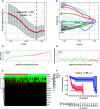
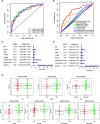
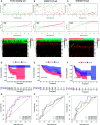

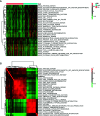
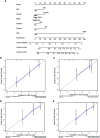
Similar articles
-
Nomogram based on autophagy related genes for predicting the survival in melanoma.BMC Cancer. 2021 Nov 22;21(1):1258. doi: 10.1186/s12885-021-08928-9. BMC Cancer. 2021. PMID: 34809598 Free PMC article.
-
Development and validation of an autophagy-related prognostic signature in esophageal cancer.Ann Transl Med. 2021 Feb;9(4):317. doi: 10.21037/atm-20-4541. Ann Transl Med. 2021. PMID: 33708944 Free PMC article.
-
A 3-mRNA-based prognostic signature of survival in oral squamous cell carcinoma.PeerJ. 2019 Jul 31;7:e7360. doi: 10.7717/peerj.7360. eCollection 2019. PeerJ. 2019. PMID: 31396442 Free PMC article.
-
A Narrative Review of Prognostic Gene Signatures in Oral Squamous Cell Carcinoma Using LASSO Cox Regression.Biomedicines. 2025 Jan 8;13(1):134. doi: 10.3390/biomedicines13010134. Biomedicines. 2025. PMID: 39857718 Free PMC article. Review.
-
Phosphorus Metabolism-Related Genes Serve as Novel Biomarkers for Predicting Prognosis in Bladder Cancer: A Bioinformatics Analysis.Iran J Public Health. 2024 Sep;53(9):1935-1950. doi: 10.18502/ijph.v53i9.16449. Iran J Public Health. 2024. PMID: 39429662 Free PMC article. Review.
Cited by
-
Incidence, prognostic factors and survival in bladder cancer patients: a population-based study.Transl Cancer Res. 2022 Aug;11(8):2742-2756. doi: 10.21037/tcr-22-46. Transl Cancer Res. 2022. PMID: 36093535 Free PMC article.
-
Poor Prognosis of Oral Squamous Cell Carcinoma Correlates With ITGA6.Int Dent J. 2023 Apr;73(2):178-185. doi: 10.1016/j.identj.2022.05.010. Epub 2022 Jul 9. Int Dent J. 2023. PMID: 35820930 Free PMC article.
-
Construction and Validation of a UPR-Associated Gene Prognostic Model for Head and Neck Squamous Cell Carcinoma.Biomed Res Int. 2022 Jun 6;2022:8677309. doi: 10.1155/2022/8677309. eCollection 2022. Biomed Res Int. 2022. PMID: 35707371 Free PMC article.
-
Characterization of Cancer Stem Cell Characteristics and Development of a Prognostic Stemness Index Cell-Related Signature in Oral Squamous Cell Carcinoma.Dis Markers. 2021 Nov 9;2021:1571421. doi: 10.1155/2021/1571421. eCollection 2021. Dis Markers. 2021. PMID: 34840626 Free PMC article.
-
Development and Validation of a Nomogram based on cell growth-related Biomarkers for Oral Squamous Cell Carcinoma.J Cancer. 2021 Jun 22;12(17):5153-5163. doi: 10.7150/jca.54475. eCollection 2021. J Cancer. 2021. PMID: 34335932 Free PMC article.
References
LinkOut - more resources
Full Text Sources

